16 Most Distinctive Pubs In London, According To A Local
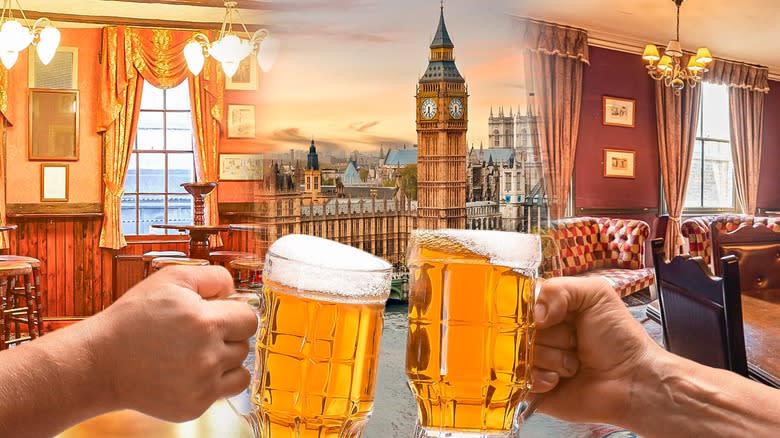
- Oops!Something went wrong.Please try again later.
Since the year 2000, hundreds of pubs across the city have closed their doors for good. Property developers, home drinking, and COVID-19 have all made their mark on the Great British Pub, but if the Great Fire of London and the Blitz taught us anything, it is that London's thirst for beer, wine, and spirits can't be defeated that easily.
While London's pub landscape is still thriving, this does mean it's busy enough for locals and tourists to make a wrong turn; to step inside cliches, chain bars, and cynical rip-off joints. This isn't acceptable, especially in a city where a pint can easily cost £7 ($8.86). Instead of choosing the first pub you see, we've identified some of the most distinctive pubs in London to bookmark for your next visit.
As a local and member of Campaign for Real Ale (CAMRA) — a lobby group that preserves British beer and British pubs — I've selected these pubs according to five main criteria: history, design, service, food, and beer. I've visited most of them, and included the rest based on enduring legacies and buzzing reputations. You may have to save your pennies ─ frugality is hard to come by in the English capital ─ but you'll get your money's worth in other ways.
Read more: 13 Liquors Your Home Bar Should Have
The Euston Tap, Euston
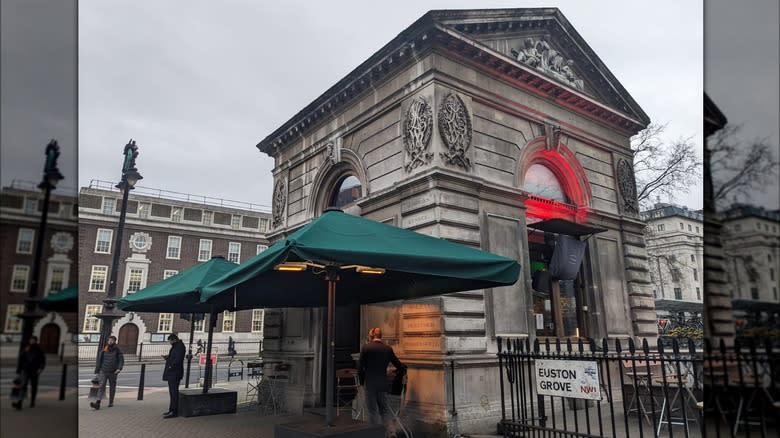
You'll find the Euston Tap in a Victorian lodge building near the entrance of London Euston station. It's one of the few remaining buildings from the original 1837 station complex, which was demolished in the 1960s and replaced with a controversial modern structure. There's not a lot of room inside, but there are certainly a lot of beers. When we visited, 18 kegs and seven casks offered brews from Britain, Germany, and the Czech Republic, and there were dozens of bottles.
Inundated with choice, we asked the friendly barman for some advice. He recommended a pint of Kent Brewery's oatmeal stout, and the roasty beverage cost just £4.80 ($6.20) — a relative bargain in central London. After nursing the pint and chatting with the staff, we scaled an old spiral staircase and found a snug seating area with a cushioned booth and two Chesterfield corner sofas. This isn't a pub to luxuriate in, but it's a brilliant beer bolthole for quality drinking and quality conversation. The Euston Tap should be on the list of any London visitor interested in British or international beer.
+44 (0)20 3137 8837
190 Euston Rd, London, NW1 2EF
Ye Olde Mitre, Holborn
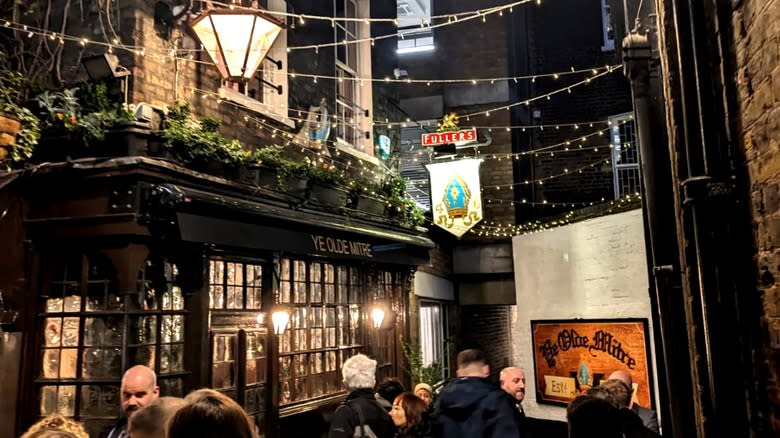
You may need a map for Ye Olde Mitre because it can be charmingly difficult to find, tucked away in an alley off Hatton Garden, London's jewelry quarter. Ye Olde Mitre dates from 1546 and is a favorite of city professionals, real ale enthusiasts, and citizens of the United States. It's so popular with Americans, in fact, that the manager keeps a list of states in a storage cupboard, and every time an American walks through his Tudor doors, he'll cross it off. Americans from 29 states visited Ye Olde Mitre in January 2024, alone!
The beer list includes commercial favorites such as Asahi and Peroni, but the best stuff is in its rotating roster of craft beer and real ale. During our visit, we tasted Neptune Brewery's Coffee Cream Ale, which was interesting on the nose and had a smooth mouthfeel with bitter, hoppy notes. Beyond the main bar is a snug wooden seating area where one can enjoy homemade bar snacks including cheese toasties and pork pies. There's more space upstairs in the Bishop's Room, where the old-fashioned, vibrantly carpeted aesthetic continues. Be sure to visit Ye Olde Mitre — it's a gem ─ but note that it's closed on weekends.
+44 (0)20 7405 4751
1 Ely Court, Ely Pl, London, EC1N 6SJ
The Seven Stars, Holborn
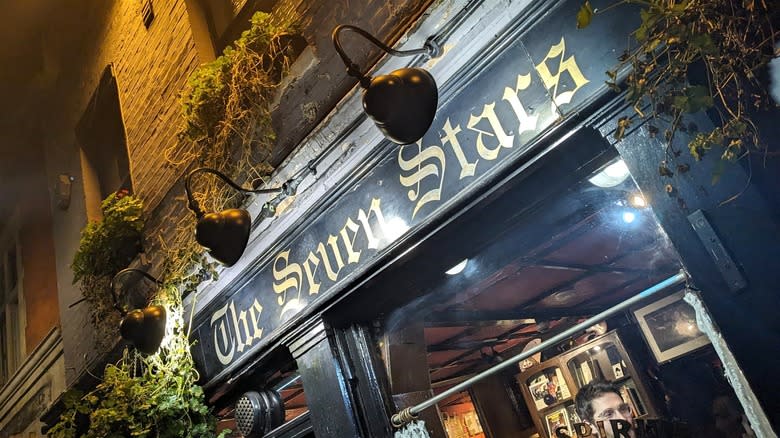
The Seven Stars is a quirky old pub on Carey Street, behind the Royal Courts of Justice. Dating to 1602, the penultimate year of Elizabeth I's reign, the pub is a mix of architectural styles, with timber beams that survived the Great Fire of London in 1666, and brickwork and stucco cladding added during the Victorian period. Today, the Seven Stars is a veritable hodge-podge of eccentric knick-knacks.
Beneath the red-timbered ceiling are green and white checkered tablecloths, classic film posters, countless photographs, and, if you're lucky, a black cat called "The General," who often wears an Elizabethan ruff collar. You may also meet Roxy Beaujolais, the so-called "Alewife for the Ages." A publican of some four decades, Roxy has managed the Seven Stars since 2001 and has quite a reputation.
Eccentricity aside, The Seven Stars is a good little boozer. It's not quite a beer enthusiast's pub, but you can expect a serviceable collection. The food is good, too. It's available during most opening hours and varies daily, depending on "availability, freshness, and Roxy's pleasure."
+44 (0)20 7242 8521
53 Carey St, Holborn, London, WC2A 2JB
The Pride Of Spitalfields, Spitalfields
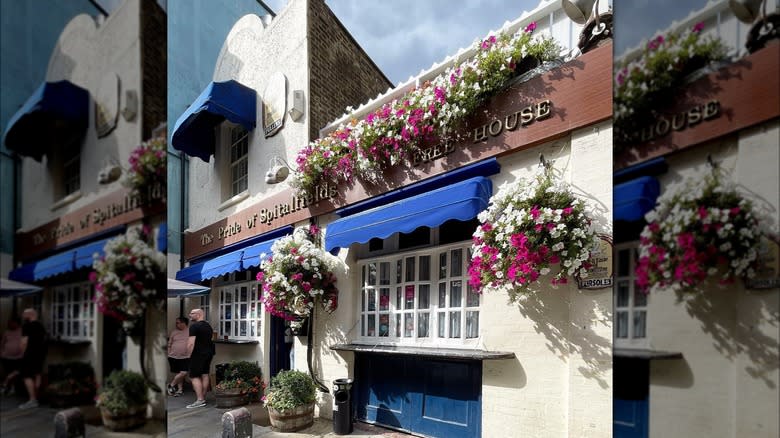
The Pride of Spitalfields is an example of the city's street-by-street variety. To get there, you'll likely walk along Brick Lane, a half-mile stretch in east London known for Bangladeshi curry houses and gentrified vintage markets. However, if you turn and walk 30 yards down Heneage Street, you will find the Pride of Spitalfields, which is like walking into your grandmother's living room from the 1980s, with its grubby burgundy carpet and heavy, tied-back pelmet curtains.
As you can imagine, this is not an establishment that's concerned with image. Its purpose is to serve real ale and real pub grub, namely steaks, chips, and traditional Sunday roasts. This is why CAMRA puts the Pride of Spitalfields in its Good Beer Guide year after year. Incidentally, as we drank pints of Fuller's Extra Special Bitter (ESB), we got talking to a fellow CAMRA member who was visiting London, such is the open, conversational vibe of the place. There's always a good atmosphere here. In the afternoon, you'll likely find an older crowd and perhaps a seat or two in the rather confined bar area. By the evening, a younger work crowd descends, ramming the interior and spilling out onto the cobbled street.
+44 (0)20 7247 8933
3 Heneage St, London, E1 5LJ
The Holy Tavern, Clerkenwell
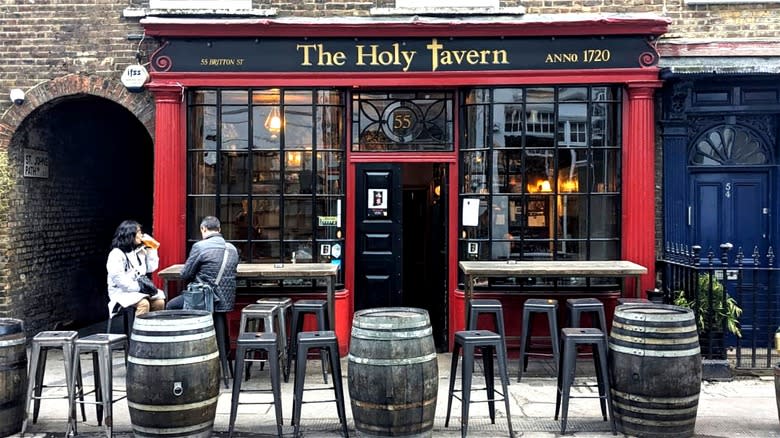
The Holy Tavern is a lovely little pub in Clerkenwell, central London. Given its rustic appearance, one would think that the Tavern has been at 55 Britton Street for centuries; however, while the building is indeed old — it dates back to 1720 — there has only been a pub on the site since the mid-1990s. You wouldn't know it by being there, though, because the Tavern's millennial repurposing is wonderfully authentic. Beyond the pub's distinctive glass frontage is a homely seating area with wooden furniture, tiled walls, hanging hops, and an old fireplace. This is an especially relaxing place to unwind on Tuesday nights, when the pub is exclusively candlelit.
The character continues in the bar area, where there is a small, elevated seating platform and a robust beer selection, including India pale ale (IPA), bitter, lager, and cider. We enjoyed a pint of Anspach & Hobday's Pfeffernusse Stout, which had a strong but balanced clove aroma and flavor. On the menu is a strong selection of hearty mains, including steak frites, beef burgers, and a modern take on London's classic fast food, fish and chips. We recommend ordering the whitebait and skin-on fries from the excellent small plates menu, which also included padron peppers, smoked salmon, and freshly baked sausage rolls.
+44 (0)20 7490 4281
55 Britton St, Clerkenwell, London, EC1M 5UQ
The Salisbury, Harringay
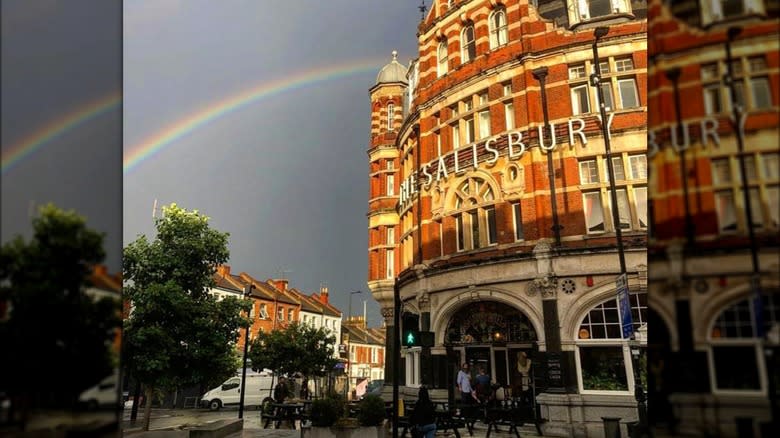
London pubs can want for space, but not The Salisbury up in Harringay. This magnificent Victorian building boasts not only epic space but also carved ceilings, wrought-iron pillars, mosaic floors, leather armchairs, several fireplaces, a stained-glass skylight, a jukebox, and a big wooden bar serving a range of ale and international beer. There is an Asian fusion kitchen called Little Dragon that opens at 5 p.m. on weekdays and 12:30 p.m. on weekends, which serves everything from pork belly and ox cheek to pak choi, chicken noodles, and a Kowloon crunch chicken burger.
The Salisbury's great size is conducive to all sorts of events, including gigs, comedy acts, and regular life drawing sessions. Also, in the late 1970s, the pub was a filming location for "The Long Good Friday," a celebrated British gangster film starring Bob Hoskins and Helen Mirren.
+44 (0)20 8800 9617
Grand Parade, Green Lanes, Harringay, London, N4 1JX
Ye Olde Cheshire Cheese, City Of London
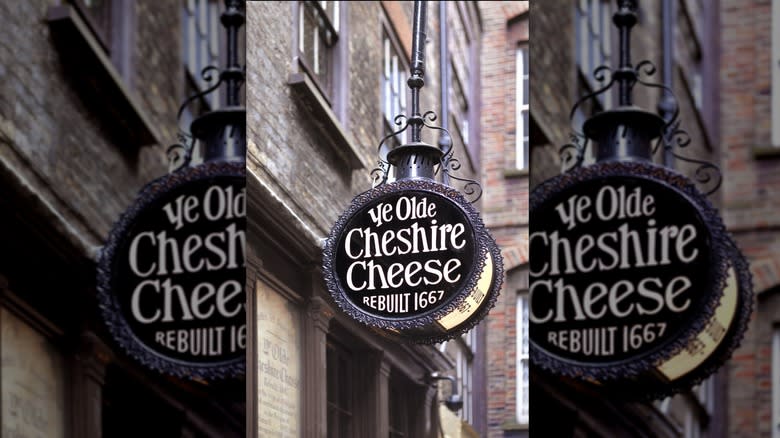
Ye Olde Cheshire Cheese is a classic among classics. There has been a pub at what is now 145 Fleet Street since 1538, during the reign of Henry VIII. This incarnation lasted until the Great Fire of London (1666), and was rebuilt, as the sign says, in 1667. Over the next few centuries, the Cheese became a hub of writers and intellectuals in and around Fleet Street, London's historic publishing center.
Charles Dickens, who referred to Ye Olde Cheshire Cheese in his novel "A Tale of Two Cities," remarked that the pub was a place for "a good plain meal with good wine." Perhaps its most loyal renowned customer was Dr. Samuel Johnson, writer of "A Dictionary of the English Language," published in 1755. Other notable names include Mark Twain, W.B. Yeats, and Polly, a Victorian celebrity parrot whose stuffed remains are perched above the ground-floor Snug Bar.
The Cheese has a multi-floor, warren-like interior. First, there is the Cheshire Bar; a wood-clad room with dim lighting, cobbled flooring, leather stools, and a dartsboard. Then there's the Chop Room, where one can enjoy steaks, lamb chops, fish and chips, sticky toffee pudding, and other traditional British dishes. The Johnson Bar and Williams Room are available to book, but you're best off heading for the Cellar Bar, where we enjoyed a pint or two of Samuel Smith's imperial stout.
+44 (0)20 7353 6170
145 Fleet St, London, EC4A 2BP
The Dove, Hammersmith
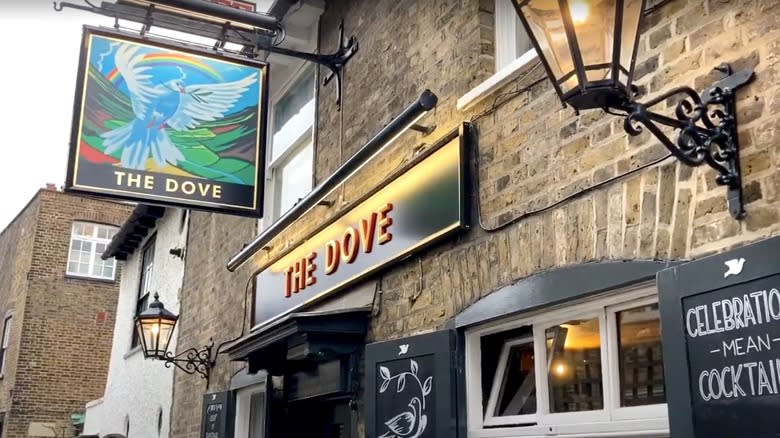
Built on the bank of the River Thames, The Dove is a Grade-II listed pub located down a small alley by Furnivall Gardens, a lawned area overlooking Hammersmith Bridge. Both the pub and the gardens are popular spots to watch the annual rowing race between Oxford and Cambridge universities, a tradition that began in 1829.
The Dove has drawn an interesting crowd since long before the boat race, though. Charles II, King of England from 1660 to 1685, entertained his mistress Nell Gwynne at the pub. Years later, in 1740, the poet and playwright James Thomson frequented The Dove while writing the lyrics to "Rule, Britannia!" Since then, the pub has entertained everyone from Alec Guinness and Ingmar Bergman, to Ernest Hemingway, Graham Greene, and the beer writer Michael Jackson. Another claim to fame is its tiny, 4 foot by 7 foot, 10 inches bar area, which is said to be the world's smallest bar room.
+44 (0)20 8748 9474
19 Upper Mall, Hammersmith, London, W6 9TA
The Prospect Of Whitby, Wapping
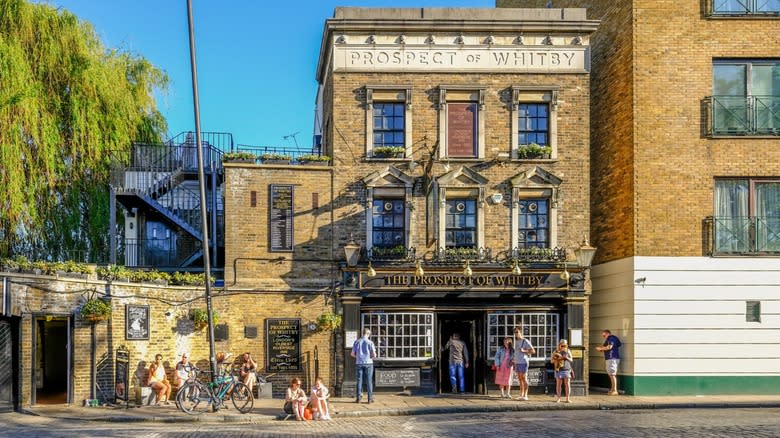
Dating to 1520, The Prospect of Whitby has a long seafaring history involving smugglers, sailors, voyagers, thieves, and cutthroats. The 16th and 17th centuries were the most violent period for the pub, then known as The Pelican or the Devil's Tavern, owing to its rough crowd. By the 19th century, the building, gutted by a fire, had been rebuilt and renamed the Prospect of Whitby, and it attracted the likes of Charles Dickens and J. M. W. Turner, who painted the view over the Thames.
Today, you'll find a 400-year-old stone floor, ample wood-clad drinking space, a terrace overlooking the Thames, a beautiful old willow tree, and replica gallows where executions once took place. The beer list comes from the Suffolk macro-brewery Greene King, which owns the pub. You can expect a selection of its best sellers, including Level Head IPA and Abbot ale, and the kitchen serves typical British pub grub — steaks, pork belly, pies. If you want more dockside history, consider visiting The Mayflower across the river in Rotherhithe, where the eponymous Pilgrim ship set sail for America in 1620.
+44 (0)20 7481 1095
57 Wapping Wall, Wapping, London, E1W 3SH
The French House, Soho
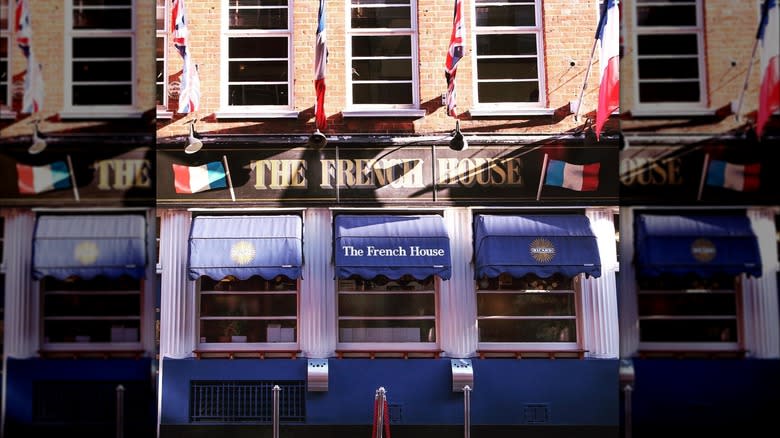
This famous Soho watering hole is popular with artists, writers, actors, and, first and foremost, conversationalists. "In the interest of serious drinking and good conversation, please DON'T use your mobile in The French." read a sign above the bar. This isn't a joke; during our visit, we saw a barmaid remind at least one patron of this rule.
The French House's no-nonsense sophistication has made it a Soho hub for decades, attracting the likes of Dylan Thomas and Francis Bacon, Jeffrey Bernard, and Brendan Behan. Don't be surprised if you rub shoulders with show business at the bar, where beer is served but wine is the specialty. There are some 30 Champagnes and wines to choose from. Upstairs is a small, Michelin-listed restaurant with oxblood walls and wooden furniture. The menu varies — expect oysters, turbot, steaks, cuttlefish, and offbeat delicacies such as calf brain.
+44 (0)20 7437 2477/2799
49 Dean St, Soho, London, W1D 5BG
Anspach And Hobday, Bermondsey Beer Mile
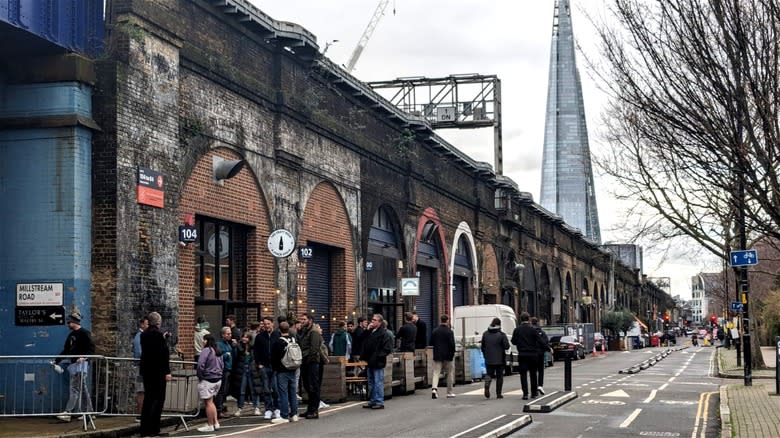
Anspach & Hobday is an independent brewery based on the Bermondsey Beer Mile, which is a collection of breweries and brewpubs along railway arches in Bermondsey, south London. Despite its name, the stretch is now closer to two miles long and boasts one of the most dynamic pub crawls in London.
Anspach & Hobday represents the best of the Mile. It's got a utilitarian craft beer look with large steel vats, corrugated metal walls, and an attractive tiled bar where you can sample a range of ales and lagers. Its best-known drink is London Black, a nitro porter that has swept the city and beyond as a craft alternative to Guinness. We found the drink to be smooth and refreshing with a subtle, roasty flavor. The brewery does not serve food, but you are welcome to bring your own from the nearby Maltby Street Market (one of the best markets in London), which offers eclectic street food and upscale eateries.
+44 (0)20 3302 9669
118 Druid St, Bermondsey, London, SE1 2HH
Dalston Curve Garden, Dalston
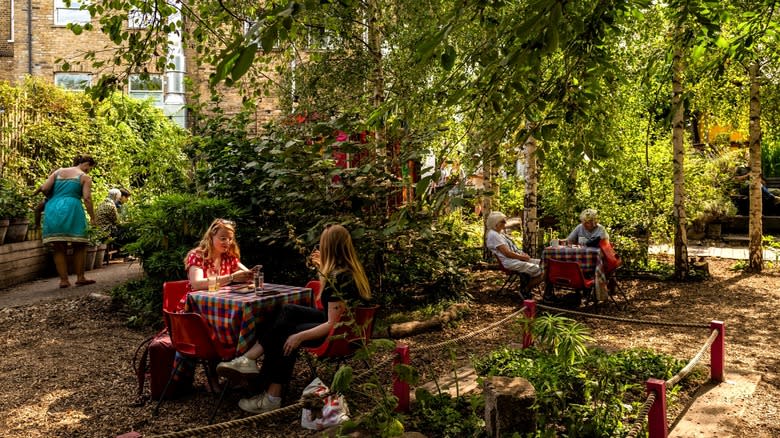
The Dalston Curve Garden is a leafy idyll in a built-up area of Hackney, east London. It is a non-profit established to provide relaxing green space for locals and visitors, and we can hardly think of a better beer garden in all of London. As you enter, you will find dozens of planters with herbs, vegetables, and flowers supporting bees, butterflies, and other wildlife. There is a bar to the left serving beer, wine, spirits, and Neapolitan pizza.
Once you have a drink, you can relax in a covered seating area with old armchairs and sofas. Or head down into the garden, which opens up into a leafy, wood-chipped area with hazel, hawthorn, and birch trees, lit up with fairy lights come nightfall. Dalston Curve Garden is open seven days a week, 12 months a year, although opening times vary depending on the season. If you're looking for peace and greenery with a table, a chair, and an alcoholic beverage, then you'll love this spot.
13 Dalston Ln, Dalston, London, E8 3DF
The George Inn, Southwark
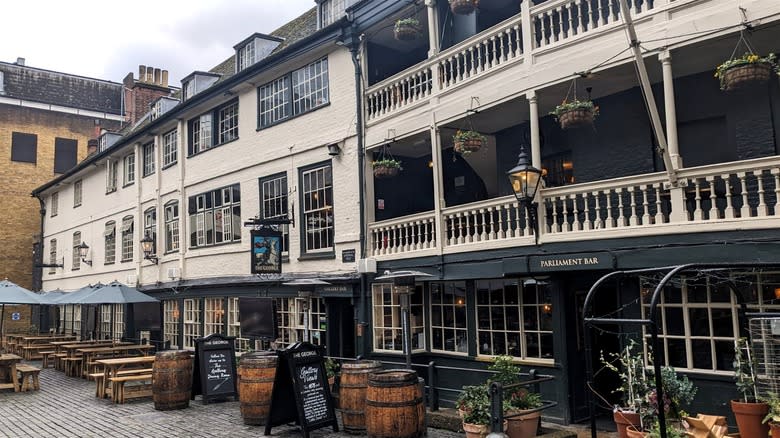
Built in 1676, The George Inn is London's last surviving galleried coaching inn. You'll find it tucked away in a gated courtyard just minutes away from the hubbub of Borough Market. During the 17th, 18th, and early 19th centuries, the inn and others like it provided food, drink, and accommodation to horse-drawn travelers. Railways devastated the coaching trade by the mid-19th century, and Hitler's bombs destroyed many of those that remained. Fortunately, with National Trust ownership and a very rare Grade-I preservation status by Historic England, The George Inn won't be going anywhere.
The pub's marvelously warped exterior is a sight to behold, and so is much of the interior, with its centuries-old wood cladding, roaring fireplaces, and "Parliament clock," which patrons relied on during the watch tax of 1797. Stories of Charles Dickens — who mentioned the pub in his novel "Little Dorrit" — stir the imagination, too.
There is plenty of room inside The George Inn, but there are also about 20 benches in the courtyard for those busy summer evenings. A Greene King establishment, there is a mixture of commercial beers and the brewery's roster. The pub food is similar to that of any other Greene King — sating, if unremarkable.
+44 (0)20 7407 2056
75-77 Borough High St, Southwark, London, SE1 1NH
The Blackfriar, Blackfriars
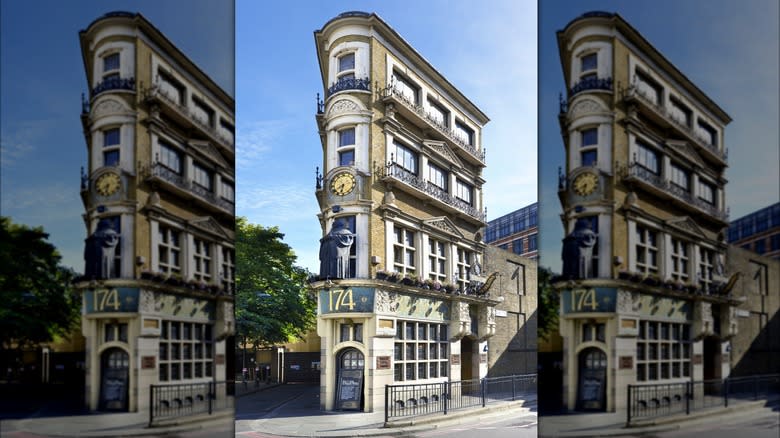
The Blackfriar is one of the most architecturally distinctive pubs in London. The Art Nouveau structure opened in 1875, but it wasn't until 1905 that the architect Herbert Fuller-Clark remodeled the building to its full, present beauty. Inside, artist Henry Poole and sculptor Frederick Callcott collaborated on intricate mosaics and stonework, creating one of the most striking pub interiors in the city. The Blackfriar was almost demolished to make way for a new road in the 1960s — a decade of widespread architectural vandalism — but the poet Sir John Betjeman used his clout to protect it. Today, the pub is Grade-II listed.
Aside from the Arts and Crafts splendor is a bar and kitchen managed by Nicholson's, a pub company that owns numerous historic pubs in the city. You can enjoy a pint of Nicholson's Pale Ale at the wooden bar, or in the remarkable arched dining room, where sandwiches, burgers, and other pub staples are served.
+44 (0)20 7236 5474
174 Queen Victoria St, Blackfriars, London, EC4V 4EG
The Wenlock Arms, Hoxton
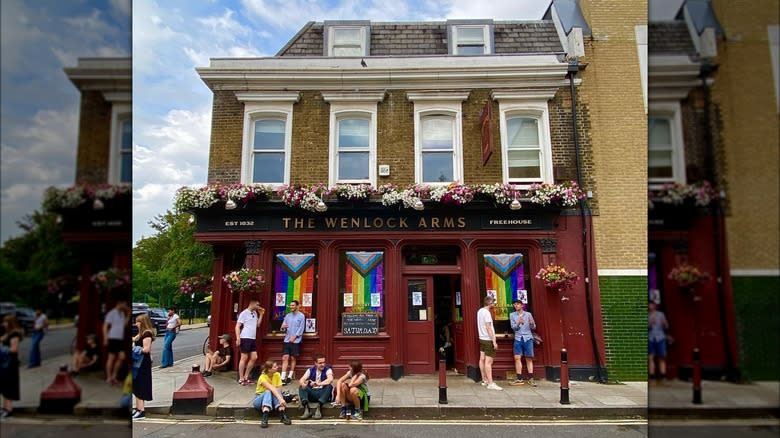
The Wenlock Arms is a proper drinkers' pub in Hoxton, near the border of Hackney and Islington. There are 10 cask ales, 10 keg lines, and a selection of real cider in an old-fashioned locale dating to 1836. All of that is great, but even better is the warm, community atmosphere that this institution has fostered for generations.
It is a feeling bolstered by the memory of 2010, when developers attempted to convert The Wenlock into apartments. A band of locals campaigned for two years until Hackney Council issued conservation status to the pub, which encouraged the owners of the Red Lion & Sun in Highgate to sign a lease and get The Wenlock Arms up and running for good. This unlikely victory saved not just a great pub, but a part of London's soul, too. There are no gimmicks necessary at The Wenlock — it attracts a diverse local crowd with great beer, good company, and an unfussy menu of pub snacks including toasties, pies, and baked Camembert.
+44 (0)20 7608 3406
26 Wenlock Rd, Hoxton, London, N1 7TA
The Prince Alfred, Maida Vale
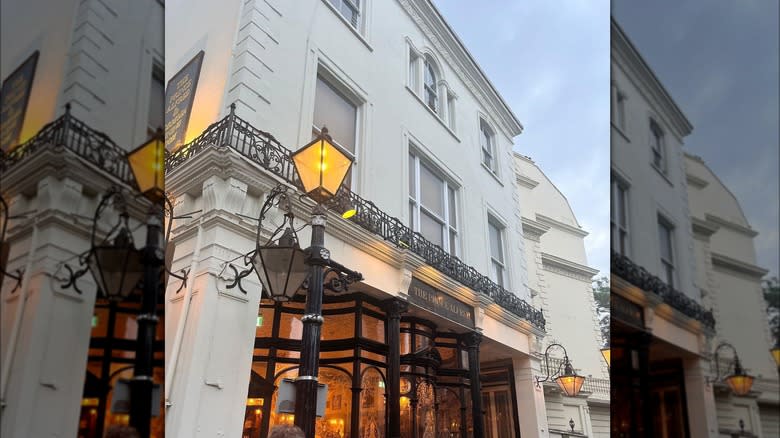
Situated in the affluence of Warwick Avenue and Formosa Street is The Prince Alfred, an elegant pub with extensive Grade-II listed Victorian features. The smart, Italianate exterior is distinguished by a striking, bowed-glass frontage, but the real attraction here is the bar area, which is divided by glass-paneled wooden partitions with low doors that one must limbo dance through.
These partitions once separated patrons according to class and gender. The Ladies Bar has a set of glazed swiveling panels called "snob screens," which afforded them privacy from riff-raff. Historic England estimates that The Prince Alfred is one of only eight pubs with original snob screens.
Past the historic bar is an airy dining room with navy Chesterfield seating and a mains menu serving everything from mussels and pan-seared trout to cote de beouf and beef short rib. There's also a small plates selection offering Scotch eggs, a popular British snack consisting of a boiled egg wrapped in breaded sausage meat. Drinks-wise, there are commercial beers on tap and a small selection from Young's, the pub's owner.
+44 (0)20 7286 3287
5a Formosa St, Maida Vale, London, W9 1EE
Methodology
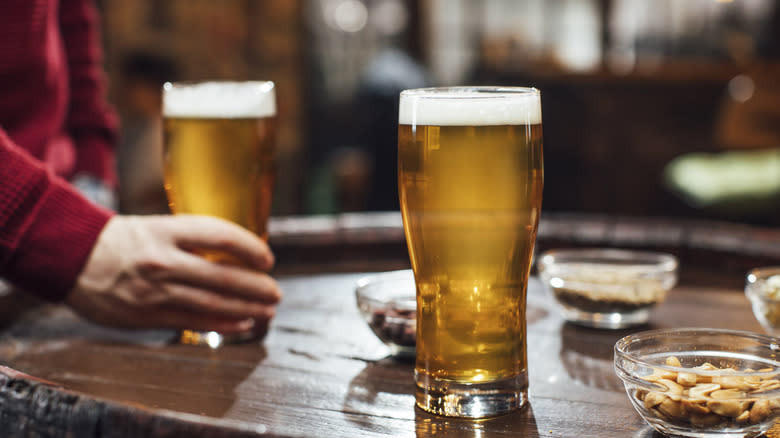
What makes a distinctive pub? As a London local and CAMRA (Campaign for Real Ale) member, I'd say the core tenets are beer, service, community and legacy. The very best pubs have centuries of history; oodles of curious design features; a friendly service for friendly punters; and a beer list that is detailed and diverse. Good food is a bonus and so are spirits, wine, and cider, but the classic British pub is rooted in beer, conviviality, and a charming environment in which to enjoy them.
With this criteria, I have settled on a list of pubs that maintain these values in 21st-century London, a city that has almost every drink and cuisine imaginable. From traditional 17th-century inns to craft beer railway bars, these establishments will give you a solid grounding in the English capital's fantastic pub culture. All prices were correct at the time of publication.
Read the original article on Tasting Table.
